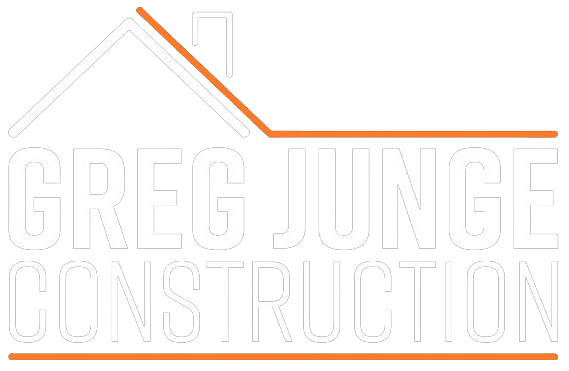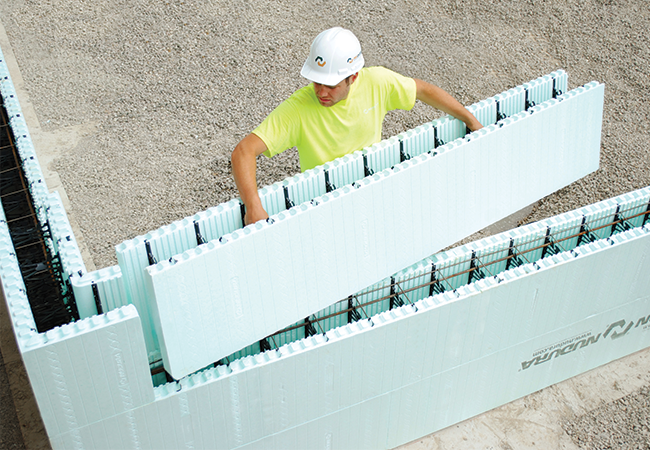What are insulated concrete forms (ICF) and why should you use them to build your custom home in Western North Carolina?
Quick Facts
Insulated concrete forms (ICF) are foam blocks that are assembled like Lego blocks, then filled with concrete, to create the walls of a house.
People choose to build with ICF for its extreme durability, energy efficiency, and quality of life improvements.
Once an ICF house is finished being built, it looks like any other house.
You may have heard about insulated concrete forms, or ICFs: a method of building that is quickly gaining popularity in the United States, Canada, and Europe. But what are ICFs? And why is this technology such a good choice for custom homes here in Western North Carolina?
What are insulated concrete forms?
ICF is the abbreviation for “insulated concrete forms”. They are, quite simply, hollow foam blocks. They’re assembled like giant Legos, then filled with concrete to create an incredibly strong, well-insulated wall.
ICFs take the place of traditional wood framing and can be used in almost any new home build.
What are the benefits of ICF?
Since ICF is a literal concrete wall, it offers a huge return on investment when it comes to durability and quality of life. People here in North Carolina select it for a number of reasons:
Energy Efficiency
A typical ICF wall– which sandwiches 6” of poured concrete between two panels of 1” EPS insulation– has an insulation value almost twice as high as a typical, 2x4 wall.
But that’s just the beginning of its energy efficient properties. ICF walls are also superior when it comes to:
Thermal bridging. In a typical, wood-framed wall every stud serves as a “thermal bridge” that allows hot/cold to “shortcut” past the the insulation. Since ICF is composed of a concrete wall and two separate panels of foam insulation, there are fewer opportunities for bridging.
Thermal massing. A dense, concrete wall takes much longer to heat/cool, which helps regulate the your home, keeping it at a constant temperature.
Air tightness. Since ICF forms a seamless wall of concrete, there are no opportunities for hot/cold air to leak in from outdoors.
Apocalypse Proof
OK, apocalypse is an exaggeration. But ICF homes have a track record of extreme durability in the face of natural disaster. When Hurricane Katrina swept through the American South in 2005, it raised 150-mph winds and 20’ tidal surges that leveled entire neighborhoods… with a few exceptions. Look at the photo below. Can you guess which house was built with ICFs?
This ICF house was still under construction when Hurricane Katrina hit.
Forest Fire Proof
Forest fires are becoming a scourge of this generation. And while they’re rampant in California and Canada, they’re not limited to those places. Over 40,000 acres of Western North Carolina burned in 2016 and, unfortunately, the trend only seems to be increasing. While extensive renovation would be required to repair an ICF home damaged by fire, the home would likely survive— and all your possession along with it.
Pest Proof
When you’re inside an ICF home, you’re in a concrete box (your slab and walls) with a wooden lid (your roof, though this can also be ICF). This leaves no access point for termites and other wood-boring insects. These are such a concern in North Carolina that building code requires a treatment against them during construction of any new home build. If you’re building an ICF home, it’s still required– but completely redundant.
Sound (and Bullet) Proof
People who live in an ICF home report how peaceful it is. You are insulated from the sound of highways, lawnmowers, and others noise pollution— like that neighbor who insists on doing target practice every afternoon. And heaven forbid one of those bullets goes astray, it will meet a concrete wall.
How much does an ICF home cost?
To upgrade a new home from 2x4 framing to ICF, you should plan to invest about 10-15% more on the total cost of the project. This covers the cost of:
ICF blocks
Concrete
Sleeving (PVC that allows you to run wiring, vents, etc. through the concrete)
Additional labor (for example, your electrician needs to cut away some of the ICF’s foam to install wiring flush with the wall)
A Low Cost of Ownership
While an ICF home requires a slightly larger upfront investment, it has a lower cost of ownership than a traditional, wood-framed home. Since ICF walls are immune to rot, rodents, termites and super resilient against extreme weather, you will spend less on repairs and upkeep during the lifetime of the building.
A “1000-Year” Home
Some people refer to dwellings built with ICFs as “1000-year homes”. It sounds extreme, but they’re not exaggerating. Concrete is an ancient, time-tested building material. When paired with modern building science, you can achieve a safe, comfortable, and durable home that far surpasses the average home.
Consider this: the Pantheon was built by the Romans in 125 AD, and– two millennia later– it’s still open to the public.
Can you guess what it was built with?
Yep. Concrete.
Like ICF homes, the Pantheon was built using concrete.
Insulated concrete form contractors near me
If you’re interested in building with ICF, the first step is to contact a local builder like Greg Junge Construction who has hands-on experience building with insulated concrete forms.
No matter where you are in your homebuilding journey, we’d love to hear from you!



